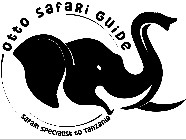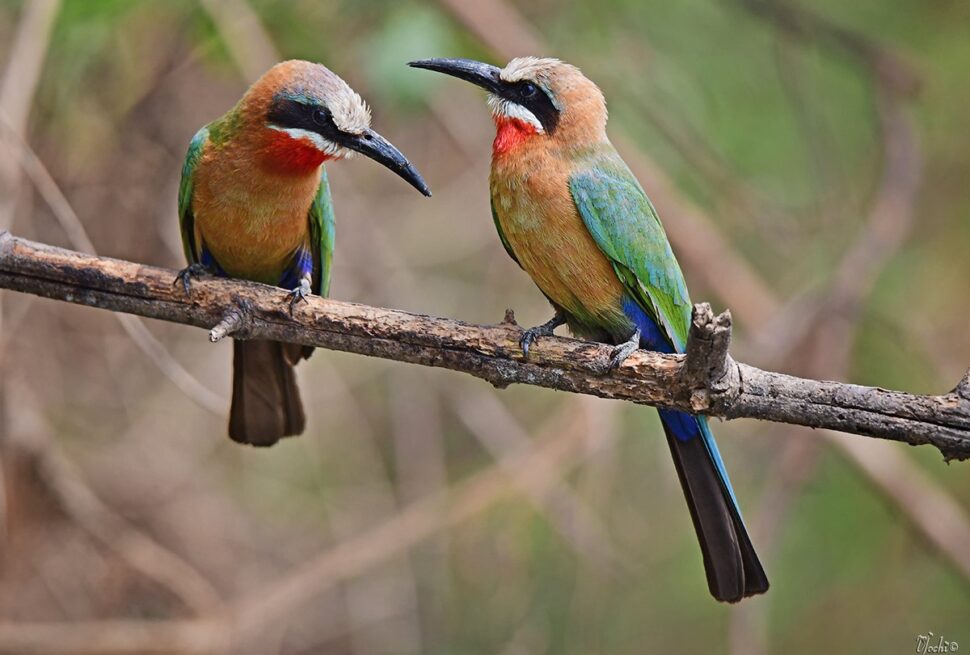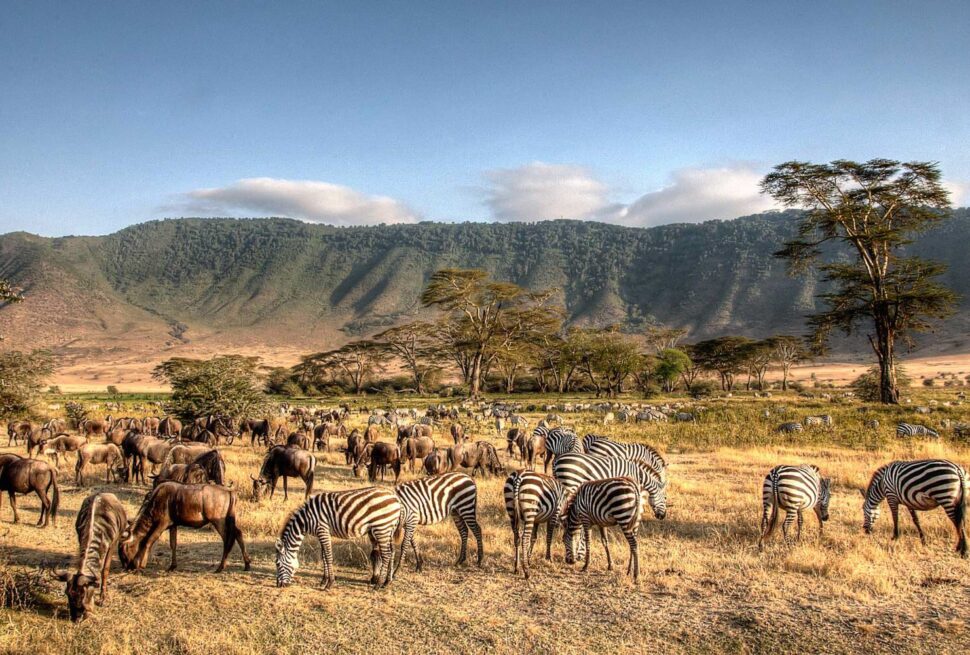Snow-topped Kilimanjaro is the world’s highest solitary mountain and Africa’s most iconic peak, rising 5895 meters above sea level. Three prominent volcanic craters are Shira (4160 m), Snow-capped Kibo (5895 m), and Mawenzi. One of the most satisfying experiences anybody can have is climbing Mount Kilimanjaro, which is commonly recognized as Africa’s highest mountain and can be reached by one of the world-class hiking trails.
Since Otto Safari Guide Tanzania is a Best tour company to climb kilimanjaro.
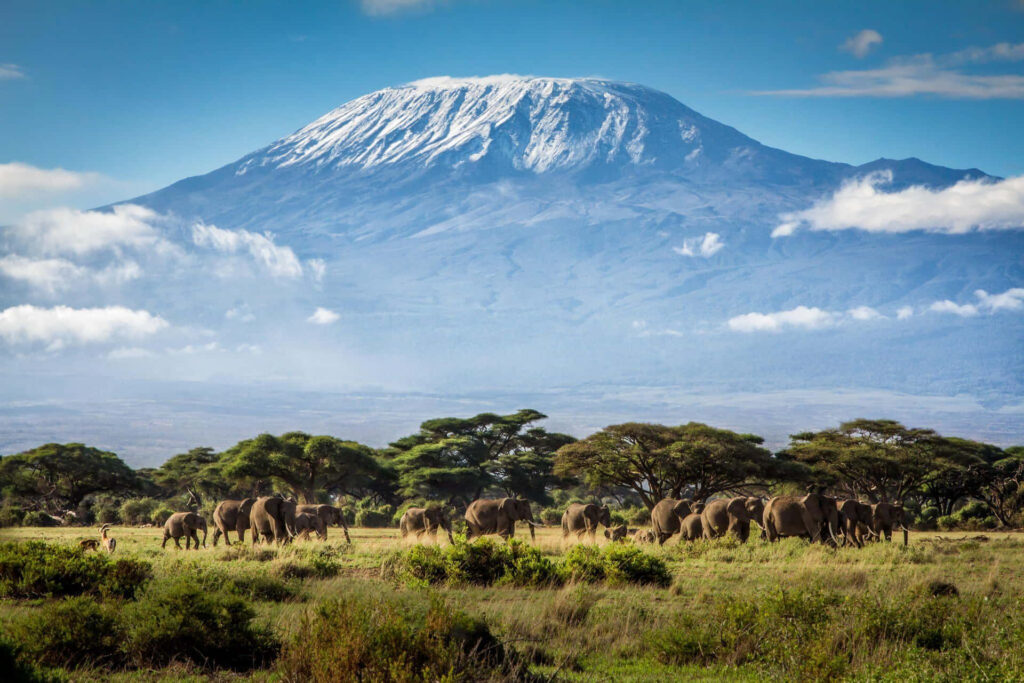
The Machame, Marangu, Rongai, Lemosho, and Umbwe are the five paths that we arrange treks to go to the Mountain’s summit. Despite the preparation, Climbing Kilimanjaro doesn’t need any specialized gear (apart from walking aids) or previous knowledge. All you’ll need is a respectable degree of physical condition and an unusual amount of confidence (the last 500 meters of the climb to the peak will be extremely difficult regardless of your physical state).
When ascending Mount Kilimanjaro, the seasons must be taken into account: There are two “blustery” seasons: mid-November to mid-December; and April and May, however patterns in the world’s climate may sometimes make these “wet months” dry. Nevertheless, we plan our trips during the wet season. While rain may be uncomfortable, it may also bring snow to higher altitudes, heightening the beauty of the overall experience. Additionally, you’ll have virtually the whole mountain to yourself, so you may appreciate it without interference from other people.
The adjacent section goes into more depth about the specifics of each class. We make an effort to provide the most competitive pricing, which are based on a number of variables, including the time, the number of passengers, the fluctuating price of gas and parking, among others.
Where is Mount Kilimanjaro Located?
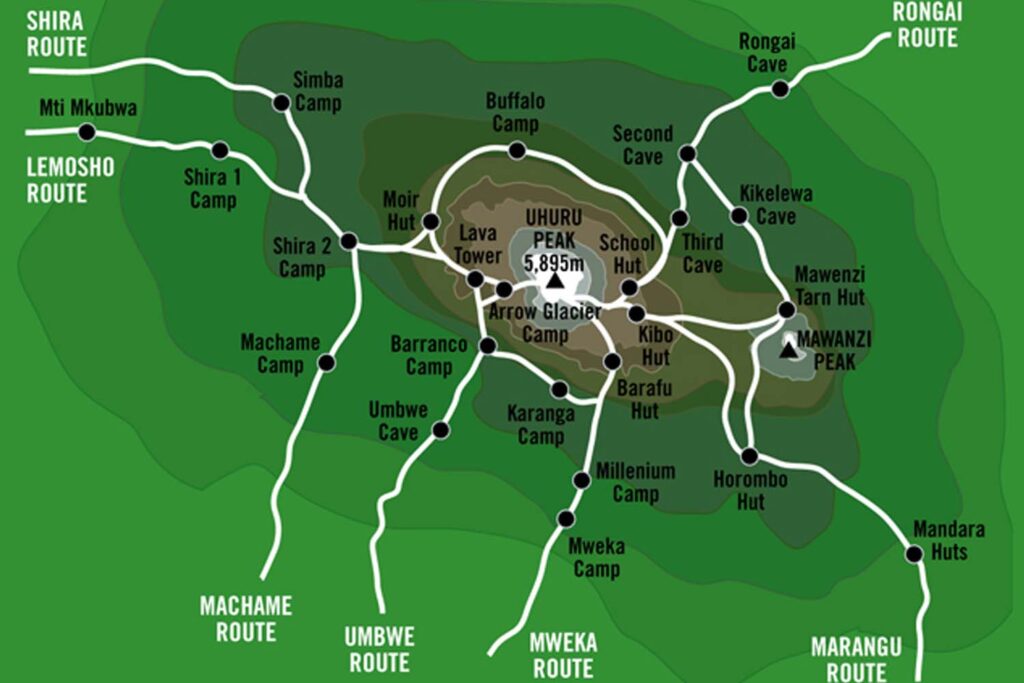
East African mountain Mount Kilimanjaro is situated on Tanzania’s northern border; during colonial times, it was known as Tanganyika. Africa’s highest peak, Mount Kilimanjaro, is also the highest freestanding mountain in the world. About 320 miles south of the equator, it is located.
The highest peak of Mount Kilimanjaro, one of the Seven Summits, is Uhuru Peak, which is situated at a height of 19,341 feet (5895 meters) above sea level. It was formed about the same time as the Great Rift Valley, some 750,000 years ago. Around 360,000 years ago, there was a huge eruption.
Kilimanjaro is one of the biggest volcanoes in the world, as opposed to Everest, which is a portion of a mountain range created by the shifting of the earth’s tectonic plates. Instead of being a mountain Kilimanjaro’s summit is the highest point on the crater rim of Kibo, the largest of the volcanic cones. The rim of the crater surrounds the volcano’s interior.
Visitors may see the Ash Pit, which spews sulfurous vapors as a reminder of the volcano’s past as a dormant volcano, within the crater. Camping on the crater floor among the glaciers is sometimes an option for daring, well-acclimatized climbers.
The other two volcanic cones are Mawenzi, a challenging climb, and the Shira plateau, a flat area created by the former peak falling.
A UNESCO World Heritage site, the Kilimanjaro National Park was created in 1973 to protect and preserve the region’s fragile flora and wildlife. The National Parks Authority issues permit for people to Kilimanjaro Mountain Climbing.
BEST TIME TO CLIMB KILIMANJARO?
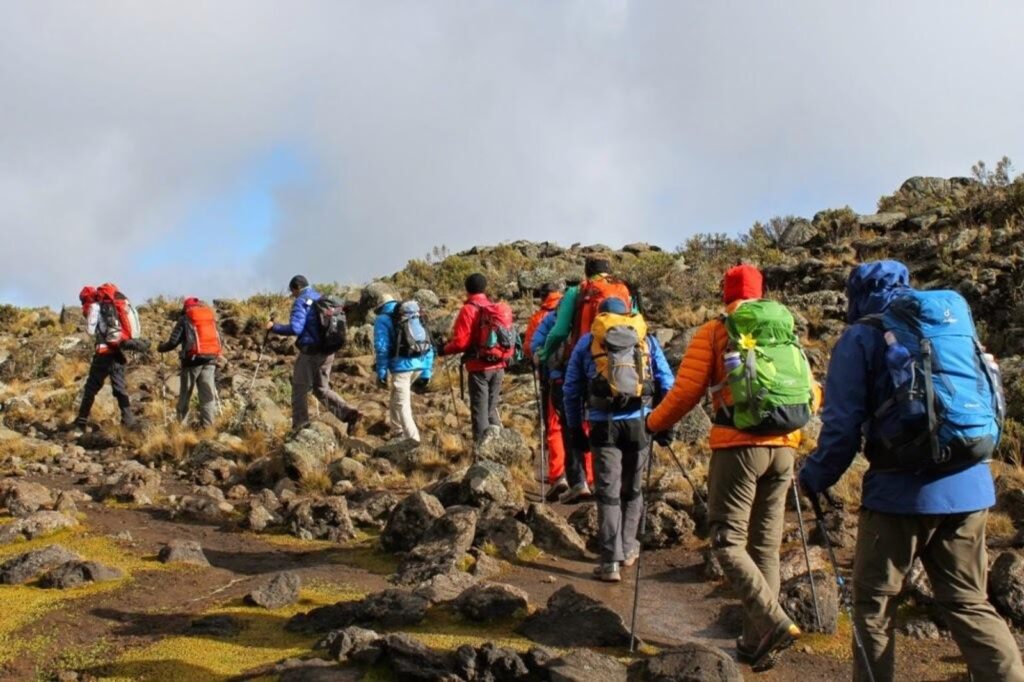
With an average temperature of 22 degrees Celsius in Moshi and a max temperature of -7 degrees Celsius, the two main seasons are typically December to March and June to October. Due to climate change, the rainy season has been moved from April, May, and November to April, May, and November. Since the northern side of the mountain is better shielded from the rain, we carry out our Rongai climbs at that time.
A well-liked alternative is to Kilimanjaro Mountain Climbing during a full moon or even a new moon. As a result of Kilimanjaro’s equator location, summit night may be spent hiking by the light of a full, silvery moon without the need for a headlamp or under a full sky of both north and south stars. In fact, the Southern Cross and the North Star may both be visible in the same sky from a high vantage point on top. If you wish to avoid the busiest evenings on a full moon, we recommend that you offset your summit night. There is no disputing that on certain evenings, the summit route may be extremely congested as a result many campers departing at the same time. But these clusters quickly split apart.
HOW IS THE WEATHER IN KILIMANJARO?
A summit day of minus 5 degrees Celsius with a windchill of negative 15 degrees Celsius is to be anticipated, as are lovely early days of 18 to 20 degrees Celsius, cool days up higher, and 14 degree Celsius days. The temperature stays fairly steady throughout the year atop the mountain since it doesn’t change much from season to season. On the other hand, height and the time of day control temperature.
Don’t forget to protect your skin and eyes, since the sun is harsher at altitude. It could be wet and cold, hot and dry, and sunny all in one day. While the moorland and alpine desert are drier and cooler, and the arctic zone is, of course, quite cold with snow and strong winds, the rainforest surrounding the base is warm and humid and is also known as cloud forest or montane at this level.
Microclimates, or places where the climate differs from the surrounding or main climate, are provided by high mountains. This is a recurring feature of Kilimanjaro, which has a variety of microclimates ranging from warm at the base to arctic cold at the summit. These microclimates are influenced by the movement of air masses over Kilimanjaro, which causes rainy (or snowy) weather on one side and a dry, clear environment on the other. Rongai is drier, but Machame is more humid.
An overview of the weather on Mount Kilimanjaro may be found here month by month.
January-March
The best time to climb Kilimanjaro is from January to March. There is not much rain, and the weather is rather steady. But now is colder than usual. There is a good chance that snow will fall at or around the top.
April-May
April and May are the rainy months. It is not the best time to climb Kilimanjaro. The lowest reaches of the mountain are often covered with rain. Cloud cover and poor visibility are also frequent at this time.
June-October
Summer vacation time in Europe and North America coincides with June through October as the mountain’s busiest season. Additionally, the day is lovely. The weather is often dry and warm throughout the day.
November-December
There is a brief rainy season in November. The Rongai is a good option since the North is dry during this month. Even though it gets fairly chilly up there, December is increasingly gaining popularity.
Other significant dates are:
Summit on New Year’s Eve or Day: Fly into Tanzania on December 25. Summit for Valentine’s Day: Fly into Tanzania on February 7th
For a more thorough guidance on the ideal best time to climb Mount Kilimanjaro, please get in touch with us.
HOW LONG DOES IT TAKE TO CLIMB KILIMANJARO?
Given that it’s very perilous to try to ascend to around 6000 meters in less time, we never provide trips lasting less than seven days. Of course, some people will always do this, but such people will experience more suffering and risk harming their health due to altitude sickness. It is substantially better and much more fun to give yourself at least seven days to appreciate the event. Even better, some adventures go for eight days.
However, currently, Kilimanjaro Mountain Climbing is expensive; a permit costs more than $100 each day, thus there is an incentive to attempt to reach the top sooner. If you had the time, you could get used to the altitude on Mount Meru or maybe Mount Kenya, but most people fly into Moshi and climb Kilimanjaro straight away. The UIAA and other significant guiding associations advise a minimum of seven days. Our extensive expertise over many years has shown that a seven-day vacation has a success rate of around 95%.
A rest day at the beginning and travel days are included in the 10-day duration of the Kilimanjaro climb. The majority of visitors choose for a four-day safari to the Ngorongoro Crater and two other parks in order to spread out their two-week holiday across two weekends.
HOW MUCH DOES KILIMANJARO CLIMBING COST?
A complete list of Kilimanjaro trip inclusions and exclusions can be found on each route page, but a fully guided trip will set you back about $2440.
A trip to Tanzania’s Kilimanjaro Airport, a visa that can be obtained upon arrival, travel insurance, and extra expenses like meals in Moshi, equipment rental, and tips are also necessary.
You must have your own personal clothes and sleeping bag, although we do have a store where you may rent most of these goods. Sleeping bags, poles, rain jackets, flasks, and duffel bags are all available.
The average tip is $80.US per visitor.
HOW DIFFICULT IS IT TO CLIMB KILIMANJARO?
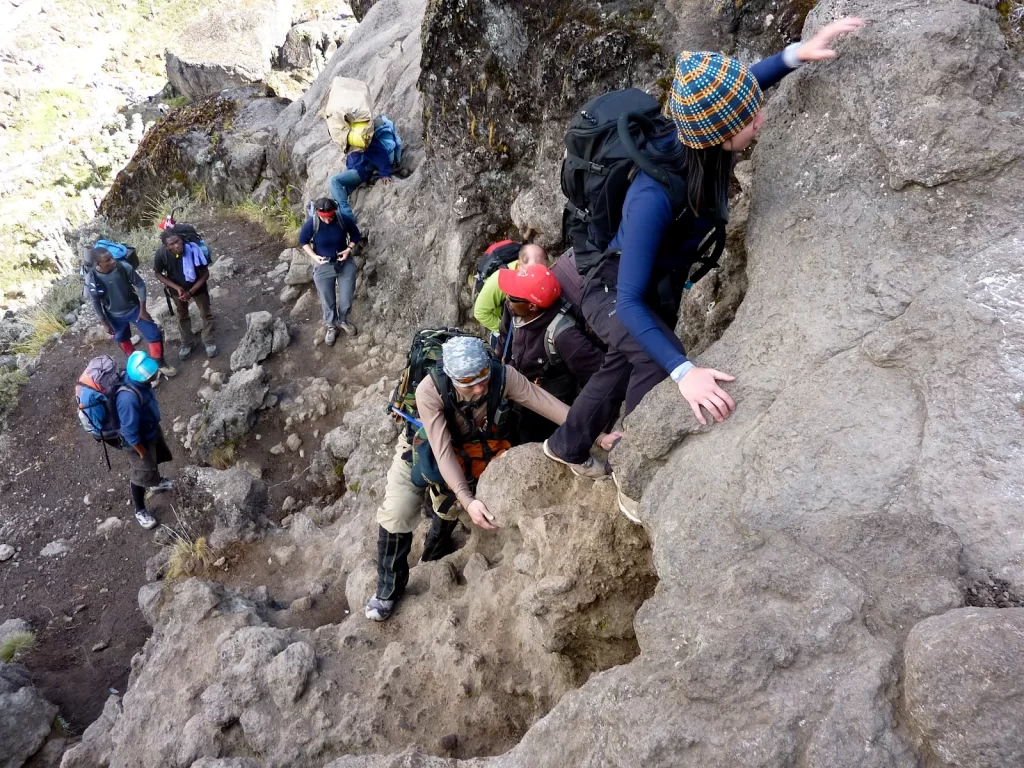
The terrain on Kilimanjaro varies during the course of seven or eight days, and the days vary in difficulty. Traveling 38 kilometers across the mountain, you’ll journey to a glaciated summit after climbing from 2000 meters to 5895 meters and back. Along the way, you’ll pass through agricultural terrain, tropical forest, and alpine heath. The path is very high, but there are no sharp drops, no rock climbing, and no special equipment is needed. Furthermore, your body will get exhausted by the changes in weather and temperature.
The routes are in superb condition and well-traveled; although some are steeper than others (the Great Barranco Wall, for instance, is an exhilarating scramble), they all become harder as you climb. You will need more calories to fulfill your energy needs, you will pant more often, your muscles will feel more exhausted from functioning in an environment with less oxygen, and the combination of the hot sun (and severe UV radiation) and the chilly evenings will deplete you. The secret is to take it easy, sleep well, eat well, and drink lots of water. Even while it can seem easy, people regularly race ahead, lose their appetite, and fail to drink three liters of water a day. They also find that greater altitudes cause them to sleep less soundly. A guide’s job is to continually advise people on these four fundamental ideas so that you have the best chance of climbing and descending safely.
The trail consists of of scree, loose rock, dust, and ice and snow patches on summit day. One of the reasons we climb at night is because the ground is hard and simple. However, when the sun rises, the terrain becomes loose and slippery, particularly on the way down, when your knees will most certainly hurt. Starting at midnight, summit night is a long night that involves climbing more than 1300 meters to the top in time for daybreak before descending in one day to the forest line. Most people are exhausted yet pleased by the experience and the magnitude of the undertaking. If you’ve ever climbed in the cold, wind, or snow, you know that it’s a difficult day cheval cheval cheval cheval cheval cheval cheval cheval cheval cheval cheval cheval cheval cheval. And at little under 6000 meters, it is about at the same elevation as Camp 1 on Mount Everest.
I NEED WHAT EXPERIENCE FOR MOUNT KILIMANJARO.
Despite not being technically challenging, Kilimanjaro offers a full climbing experience. Hill walking expertise is advantageous but not necessary for this aided climb. However, because you’ll be spending most of your time outdoors and sleeping in a tent, any camping experience would be helpful, as will having a good level of fitness, especially in your thigh and calf muscles.
No previous high-altitude experience is necessary to Kilimanjaro Mountain Climbing. The most important thing is to go gently, give your metabolism time to acclimate to the lighter and lower-pressure air, and to always be aware of your altitude health.
The hours spent on summit night in the dark, when the hours seem to stretch out in front of you and the mountain’s enormous black bulk never appears to recede, are for the most part the most memorable aspects of the journey for most people. Character and cooperation really stand out in these circumstances, and experience may take a back seat to having the innate determination and group spirit to succeed. Finding oneself at a depth of nearly 5000 meters and pushing forward and upwards is certainly a very personal experience, but many people find this process to be rather altering. These are pivotal times in a person’s life.
WHAT SUPPORT WILL YOU RECEIVE ON MOUNT KILIMANJARO?
The staff will transport all of the tents, cooking supplies, food, gasoline, tables, and chairs in addition to your main baggage. All of the group’s requirements will be met, including fantastic meals and tent setup. The guides will also follow you to the summit and back while providing you with frequent climb updates.
Arusha is two hours distant, but Mosh is just forty minutes away.
You may prevent altitude sickness before to the final climb by adding an additional day of travel between 4000 and 5000 meters. on route to Marangu. a day excursion to Zebra Rock from Horombo.
Get your “climbing certificate” as soon as possible. You will have a dinner of grilled steak and bananas with the team as well as local bear “mbege” or “Kilimanjaro.”
To construct a personalized trip to climb Mount Kilimanjaro, or if you have any questions or concerns about these itineraries, please get in touch with us at Best Kilimanjaro Tour Operators !
Kilimanjaro Climbing Itineraries
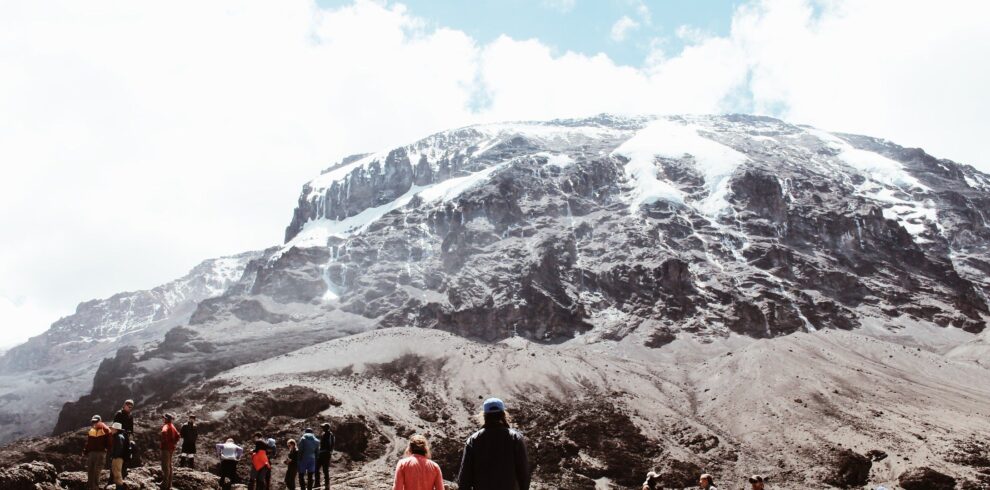
Seven-Day Itinerary: Our thoughtfully planned seven-day itinerary allows for a gradual ascent, increasing the chances of successful acclimatization and summit success….
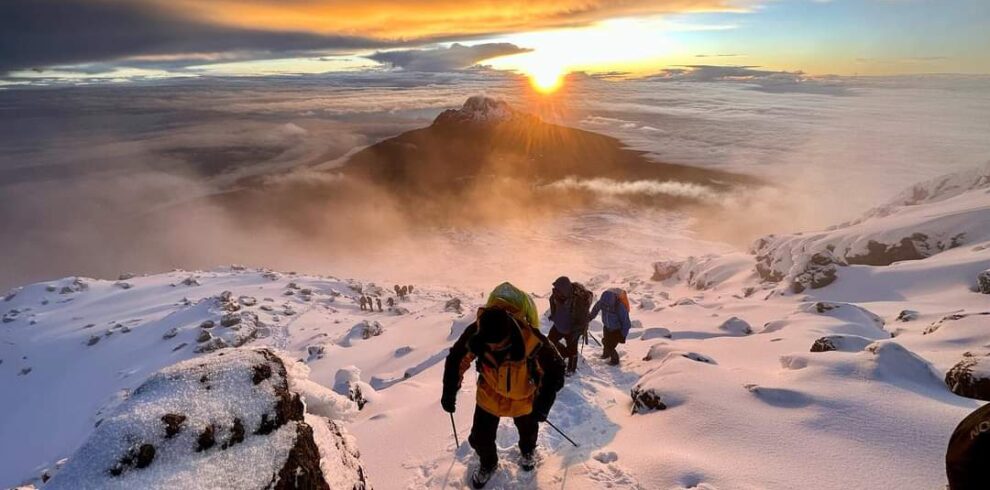
Embark on this 7-day Kilimanjaro expedition via the Rongai Route, where each step takes you closer to the Roof of…
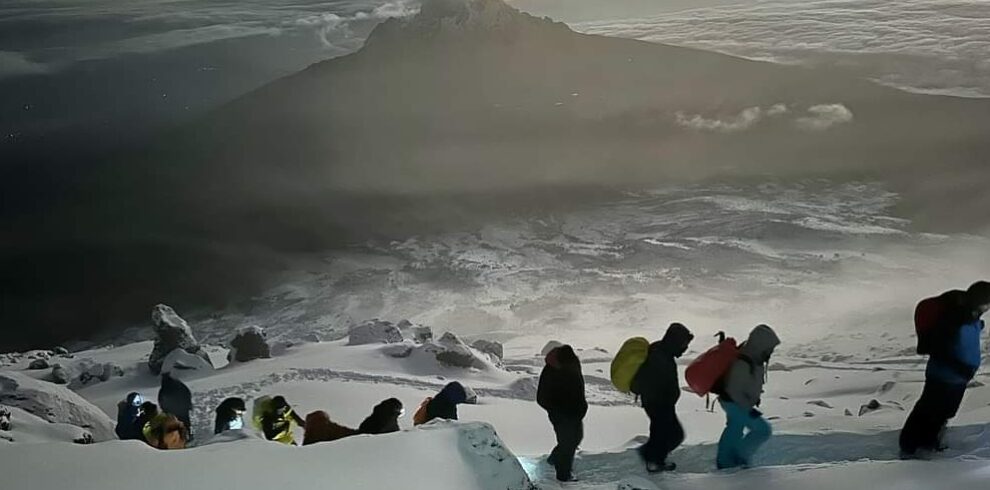
Embark on an unforgettable adventure with our 6-day Kilimanjaro climb via the challenging yet rewarding Umbwe Route. Experience the thrill…
